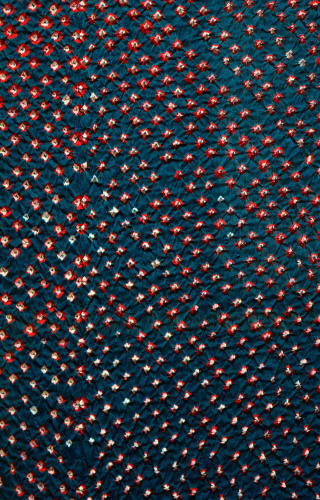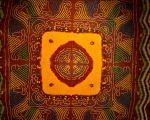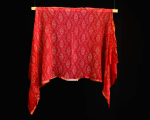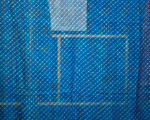This image gallery presents some examples of Resist-Dyed textiles.
Resist Dyeing of cloth is patterning done by dyeing after sections of the cloth have been reserved. This can be achieved by two very different methods. The first involves some kind of manipulation of cloth - whether tying, stitching, folding or wrapping. The second is done with materials like wax or mud, which are applied to the cloth according to the design to restrict the absorption of colour. In more complex versions, the cloth is dyed in several colours in sequence, with different portions reserved each time, to produce a multi-coloured pattern.
The patterns achieved by the two methods of resist-cloth manipulation and the application of wax or mud resist - are very different in character; while in the cloth manipulations, the lines and patterns are more fluid, with wax or mud resist, the lines are typically sharper and spiky.
Evidence of resist-dyed textiles is found in Jain manuscripts from the twelfth century onwards and in the cave paintings at Ajanta from the sixth and seventh centuries. The technique is thought to have originated in Western India and is, even now, concentrated in Gujarat and Rajasthan.

















